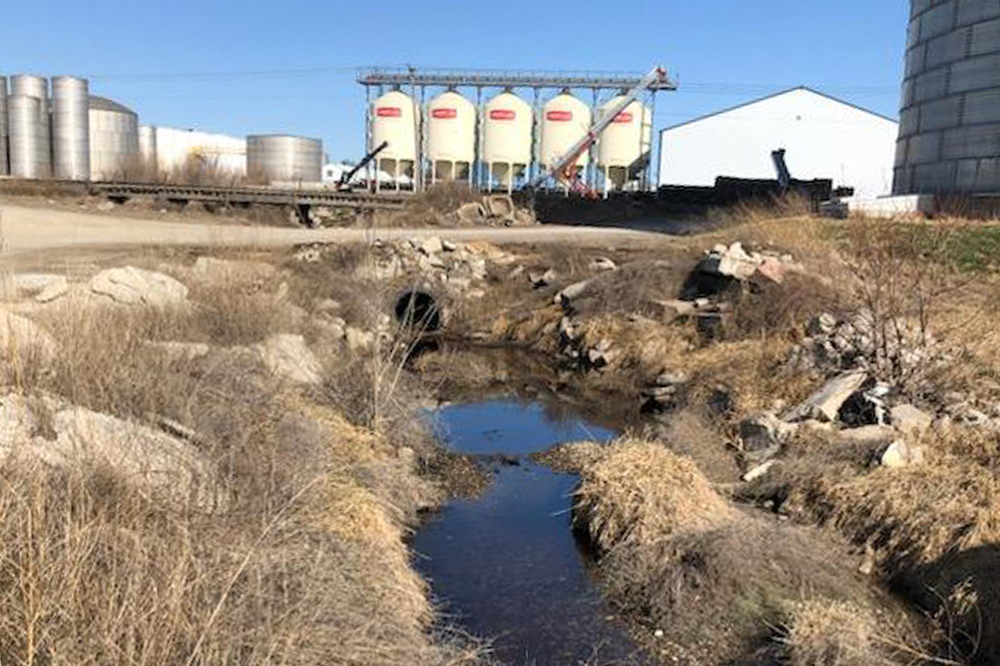Fertilizer killed more than 750,000 fish in Nishnabotna
March 27th, 2024 by Ric Hanson
(Iowa Capital Dispatch) – A fertilizer spill this month in southwest Iowa killed nearly all the fish in a 60-mile stretch of river with an estimated death toll of more than 750,000, according to Iowa and Missouri conservation officers. That is the biggest fish kill in Iowa in at least a decade and the fifth-largest on record, according to state data. And it could have been worse: Fish populations were likely smaller than normal when the spill happened because of cold water temperatures and low river flows.
The spill originated at NEW Cooperative in Red Oak, where a valve that either malfunctioned or was not properly closed leaked about 265,000 gallons of liquid nitrogen fertilizer, most of which went into the nearby East Nishnabotna River. The leak happened on a weekend from March 9 to 11 in an area where the fertilizer is distributed to customers of the farmers’ co-op. That area is not required by state rules to have barriers that would prevent a leak from reaching the river. The result was a widespread annihilation of aquatic life.
A DNR investigation found dead or dying fish for 50 miles of river — beyond where the East and West Nishnabotnas meet — all the way to the Missouri border. There were also numerous dead frogs, snakes, mussels and earthworms. The DNR will return in late spring to note whether the fertilizer killed turtles that had buried themselves in the river bottom for winter. Their bloated carcasses will float to the river surface.
The carnage continued into Missouri, where the unified Nishnabotna River flows for about 10 miles before it meets the Missouri River. Matt Combes, a science unit supervisor for the Missouri Department of Conservation, said there was “a near total fish kill” in that state. The department surveyed one bank of the river for about two miles and counted nearly 4,000 dead fish. It will use that sample to estimate the total number of fish that were killed, which will likely be in the tens of thousands. The department is continuing to monitor the Missouri and Nishnabotna rivers for additional effects from the contamination. It’s possible NEW Cooperative will face sanctions in both states.

NEW Cooperative spill
The size of the fish kill in Iowa was estimated to be about 749,000, said Chris Larson, a fisheries supervisor for the DNR. Small fish such as minnows and chubs account for the vast majority of those fish, but among them were also about 7,700 channel catfish that anglers target.
Those who are responsible for fish kills typically pay restitution to the state based on the number and types of fish that die. Larson said a total restitution amount has not yet been solidified, but that the estimated value of the small fish is about $85,000. The value of the catfish would be about $115,000. Those two figures combined would be the largest valuation for a documented Iowa fish kill, according to DNR data.
Others that have caused recent fish kills have typically paid fish restitutions and a fines of up to $10,000 — the maximum the DNR can order administratively. The department has the option to seek higher penalties in district court.





